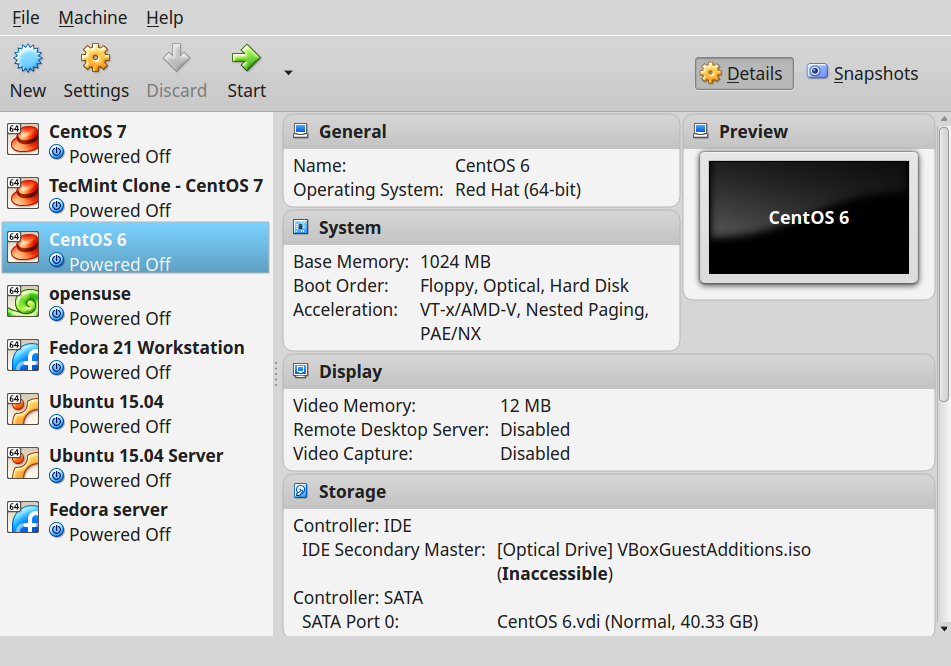Resizing Virtual Appliances Debian In Virtualbox For Mac
A recommended alternative is Virtual Machine Manager (buster/virt-manager). To install VirtualBox you must use the stretch-backports repository. Which adds various features, such as shared clipboard, auto-resizing,. Album Android Database Drupal INWE Java Lifetime Linux Mac Movies Music Onea Realdolmen Sport Website. Resizing disk drive in Ubuntu guest system, running on a Virtual Box. On the host machine (Windows). Make a note of the size of the linux-swap partition 4 GB in my case.
1.14.1. About the OVF FormatOVF is a cross-platform standard supported by manyvirtualization products which enables the creation of ready-madevirtual machines that can then be imported into a hypervisorsuch as Oracle VM VirtualBox. Oracle VM VirtualBox makes OVF import andexport easy to do, using the VirtualBox Manager window or thecommand-line interface.Using OVF enables packaging of virtualappliances. These are disk images, together withconfiguration settings that can be distributed easily. Toontrack ezplayer pro 1.1.0 for mac. This wayone can offer complete ready-to-use software packages, includingOSes with applications, that need no configuration orinstallation except for importing into Oracle VM VirtualBox.They can come in several files, as one or several diskimages, typically in the widely-used VMDK format.
They also include a textualdescription file in an XML dialect with an.ovf extension. These files must thenreside in the same directory for Oracle VM VirtualBox to be ableto import them.Alternatively, the above files can be packed together into asingle archive file, typically with an.ova extension. Such archive files usea variant of the TAR archive format and can therefore beunpacked outside of Oracle VM VirtualBox with any utility that canunpack standard TAR files.Base Folder: Specifiesthe directory on the host in which to store the importedVMs.If an appliance has multiple VMs, you can specify adifferent directory for each VM by editing theBase Folder setting forthe VM.MAC Address Policy:Reinitializes the MAC addresses of network cards in yourVMs prior to import, by default.
You can override thedefault behavior and preserve the MAC addresses onimport.Import Hard Drives asVDI: Imports hard drives in the VDI formatrather than in the default VMDK format.Click Import to import theappliance.Oracle VM VirtualBox copies the disk images and creates local VMswith the settings described on theAppliance Settings screen.The imported VMs are shown in the list of VMs in VirtualBoxManager.Because disk images are large, the VMDK images that areincluded with virtual appliances are shipped in a compressedformat that cannot be used directly by VMs. So, the imagesare first unpacked and copied, which might take severalminutes.You can use the VBoxManage import command toimport an appliance.Format: Selects theOpen VirtualizationFormat value for the output files.The Oracle Cloud Infrastructure value exportsthe appliance to Oracle Cloud Infrastructure. See.File: Selects thelocation in which to store the exported files.MAC Address Policy:Specifies whether to retain or reassign network card MACaddresses on export.Write Manifest File:Enables you to include a manifest file in the exportedarchive file.Include ISO ImageFiles: Enables you to include ISO image filesin the exported archive file.Click Next to show theVirtual System Settingsscreen.You can edit settings for the virtual appliance. Forexample, you can change the name of the virtual appliance oradd product information, such as vendor details or licensetext.Double-click the appropriate field to change its value.Click Export to begin theexport process. Note that this operation might take severalminutes.You can use the VBoxManage export command toexport an appliance.The key pair is usually installed in the.oci folder in your home directory.For example, /.oci on a Linuxsystem.Upload the public key of the key pair to the cloudservice.For step-by-step instructions for creating and uploading anAPI signing key for Oracle Cloud Infrastructure, see:.Create a cloud profile.
Thecloud profile contains resource identifiers for your cloudaccount, such as your user OCID, and the fingerprint foryour public key. You can create a cloud profile in thefollowing ways.Automatically, by using the CloudProfile Manager. See.Automatically, by using the VBoxManagecloudprofile command. See.Manually, by creating an ociconfigfile in your Oracle VM VirtualBox global configurationdirectory. For example, this is$HOME/.config/VirtualBox/ociconfigon a Linux host.Manually, by creating a config filein your Oracle Cloud Infrastructure configuration directory. For example, thisis $HOME/.oci/config on a Linuxhost.This is the same file that is used by the Oracle Cloud Infrastructure commandline interface.Oracle VM VirtualBox automatically uses theconfig file if no cloud profilefile is present in your global configuration directory.Alternatively, you can import this file manually intothe Cloud Profile Manager.For more information about the cloud profile settings usedby Oracle Cloud Infrastructure see:.Custom Linux images.
Toexport a custom Linux image, prepare the VM as describedhere:.Subnets. When exporting aVM to cloud, ensure that the subnets that are used by sourceVMs are available in the target compartment on the cloudservice. 1.14.5. Exporting an Appliance to Oracle Cloud InfrastructureOracle VM VirtualBox supports the export of VMs to an Oracle Cloud Infrastructure service.The exported VM is stored on Oracle Cloud Infrastructure as a custom image.
